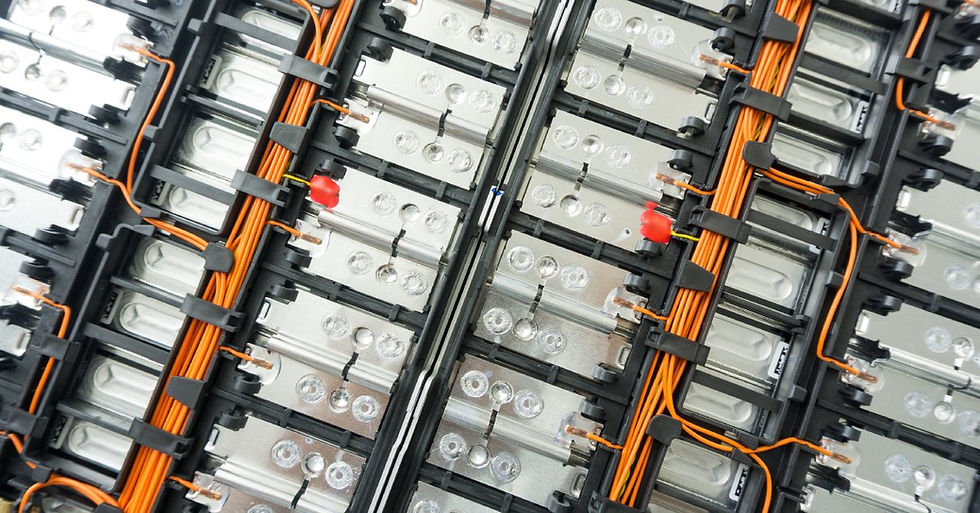A Look at the Science Behind High-Voltage Measurement
- Ryan Saldana
- Sep 4
- 5 min read

High-voltage measurement provides useful information for electrical system maintenance and safety. Engineers and technicians rely on precise measurements to guarantee that equipment operates safely.
Advanced high-voltage tools offer data for technicians and operators regarding the energy output of their systems. If the data fluctuates, it may indicate a distress or safety issue within their equipment. To diagnose equipment properly, take a look at the science behind high-voltage measurement and how specialists continue to develop these devices to produce accurate data for operators.
High-Voltage Measurement Fundamentals
High-voltage measurement involves complex electrical principles that govern how energy moves through systems. When electrical current flows through conductors, it creates electromagnetic fields that technicians can measure and analyze. These measurements reveal information about system performance, potential failures, and safety conditions.
Voltage is the electrical potential difference between two points in a circuit. High-voltage systems typically operate above 1,000 volts AC or 1,500 volts DC, though definitions vary by application and industry standards.
Core Components of High-Voltage Measurement Systems

Advanced high-voltage measurement equipment incorporates several components that work together to provide accurate readings. Each one contributes to the system’s reliability and the measurement process. Learning how each part functions will provide an in-depth understanding of the benefits of high-voltage measurement systems.
Voltage Dividers and Attenuation Networks
Voltage dividers reduce high-voltage signals to levels that measurement instruments can safely process. The networks use precision resistors or capacitors arranged in specific configurations to maintain accurate voltage ratios. The divider ratio determines how much the input voltage decreases before reaching the measurement circuitry.
Specifically, resistive dividers offer excellent accuracy for DC and low-frequency AC measurements. They provide stable performance across wide temperature ranges and maintain consistent ratios over time. However, resistive dividers consume power and may not suit all high-voltage applications.
On the other hand, capacitive dividers excel in AC high-voltage measurements because they consume minimal power and provide excellent frequency response. They use capacitors to create voltage division and maintain isolation between high-voltage circuits and measurement equipment.
Isolation and Safety Systems
Isolation in high-voltage systems preserves equipment integrity and operator safety. These systems rely on robust isolation barriers to prevent electrical currents from crossing between high-voltage circuits and sensitive low-voltage components. By designing these precise barriers, the equipment operates safely in demanding applications.
With optical isolation, light signals transfer measurement data across barriers. This technique produces complete electrical separation, contributing to the system’s safety without compromising performance. Fiber optic cables, known for their immunity to electromagnetic interference, excel at transmitting signals accurately across long distances, especially in environments with electrical noise.
Comparatively, magnetic isolation employs transformers or magnetic coupling to create the necessary separation. Tailored primarily for AC measurements, this method offers common-mode rejection for reliable performance in high-frequency signal environments. Magnetic isolation systems balance efficiency with safety to manage the complexities of high-voltage signal transmission.
Signal Processing and Digital Conversion
Modern measurement systems convert analog voltage signals to a digital format for processing and analysis. Analog-to-digital converters (ADCs) sample the incoming voltage signals at specific rates and convert them to numerical values that computers can process.
High-resolution ADCs capture fine voltage variations that indicate system performance changes. These converters must operate at sampling rates fast enough to capture transient events while maintaining accuracy across the full measurement range.
Once digitized, the data undergoes rigorous processing through digital signal processing (DSP) algorithms. These algorithms filter out noise, correct system errors, and distill raw data into actionable insights. From identifying hidden patterns to detecting anomalies, DSP enhances the clarity and reliability of measurement results.
Measurement Techniques and Methodologies
Professionals use high-voltage equipment to diagnose electrical systems using varying techniques for accurate readings. By understanding the science behind high-voltage measurements, specialists can fine-tune instruments to receive the data they want to acquire.
Direct Measurement Methods
Direct connections to high-voltage circuits demand an intricate balance of safety, precision, and real-time feedback. High-voltage probes, equipped with advanced attenuation networks and miniature designs, enable accurate point measurements and minimize interference with the circuit. Meanwhile, permanent monitoring systems work in parallel, as their continuous observation acts as an early warning system for potential issues.
What sets these methods apart is their adaptability to numerous applications. Probes excel in scenarios requiring targeted, on-demand readings, and permanent systems provide a constant stream of data that underpins preventative maintenance strategies. By leveraging both, modern systems maintain safety, capture transient events, and uphold the integrity of high-voltage microelectronics.
Indirect Measurement Approaches
Indirect methods offer a practical alternative for gauging high-voltage levels, especially in scenarios where safety concerns or system complexities hinder direct measurements. By focusing on related electrical parameters, these techniques provide valuable insights without requiring physical contact with high-voltage components.
One approach involves detecting the electromagnetic fields generated around high-voltage conductors. These fields, influenced by voltage levels, enable technicians to estimate voltages indirectly and precisely. They’re particularly advantageous for overhead power lines, where direct access is either impractical or risky.
Another technique evaluates insulation integrity by monitoring partial discharges. Insulation materials in high-voltage equipment, when aged or damaged, emit subtle electrical discharges. Advanced measurement systems can detect these discharges, interpreting their patterns to uncover early signs of insulation degradation.
Accuracy and Calibration Considerations

Diagnosing accurate measurements demands rigorous calibration, careful attention to environmental factors, and a design that mitigates interference. Calibration establishes the reliability of measurement systems, connecting their accuracy to recognized national or international standards.
Calibration Standards and References
The calibration process relies on standards that anchor accuracy. Primary standards, such as precision voltage sources with exceptional stability, set the reference point for laboratories. Secondary standards extend this precision into the field and function as practical tools for routine equipment checks and validations.
Traceability ensures that all measurements connect to recognized national or international standards. A chain of calibration provides confidence in measurement accuracy and enables comparison of results between different organizations and locations.
Environmental Factors and Compensation
High-voltage measurement systems face numerous challenges from their surroundings. Temperature fluctuations, for instance, alter the electrical properties of resistors, capacitors, and other key components. To counteract this, compensation circuits and algorithms dynamically adjust for these changes.
Meanwhile, external conditions such as humidity and atmospheric pressure can also impact measurements involving air insulation or corona effects. Well-designed systems incorporate adjustments to account for these variables for consistent performance across diverse environments. By addressing these environmental variables holistically, high-voltage measurement systems achieve both reliability and adaptability.
To protect your equipment and operators from electrical hazards, HVM Technology provides high-voltage measurement equipment that accurately diagnoses risks and signs of damage. This way, businesses can conduct maintenance and repairs efficiently with the professionals in their field. To learn more about our products and their specifications, visit our website today!





Comments